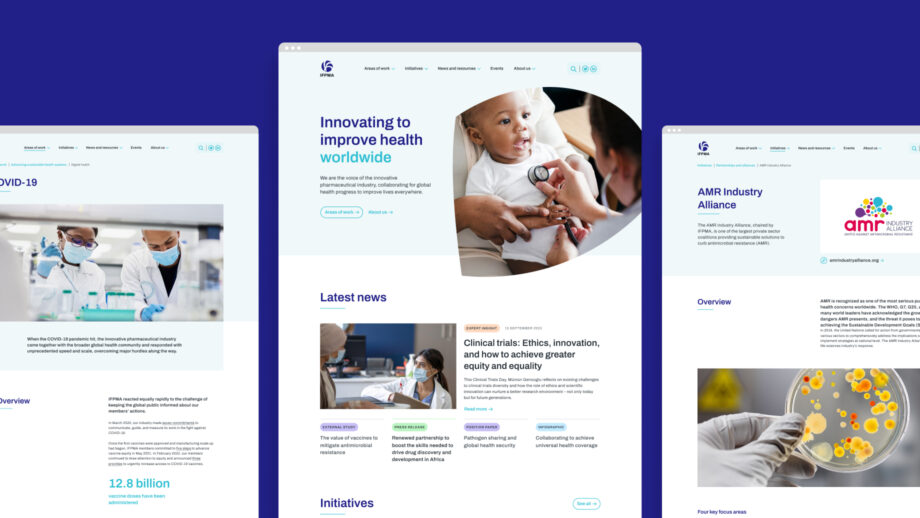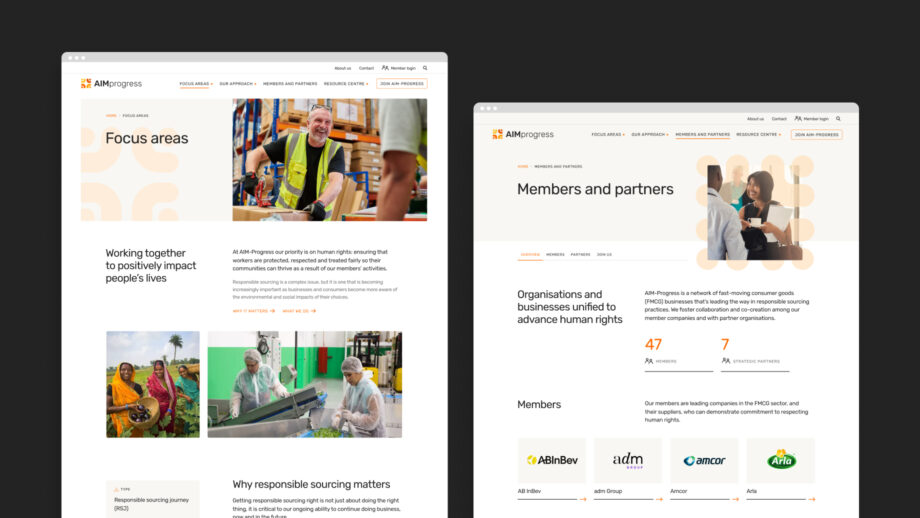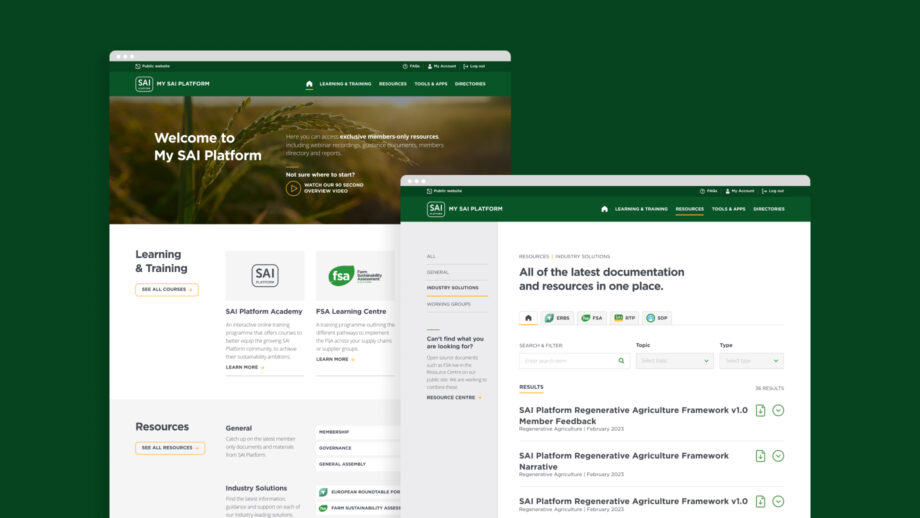The humble website is something that every for-impact organisation is expected to have. Seen by many as a shop window for your brand, it plays a key role in selling the story of your cause to your audience. But what if it could do more than that? What if your website could actually help deliver the change you seek?
A web of potential
The internet’s potential as an enabler of positive change is colossal. Yet, much of the web is set up for the sell – making us all into consumers and fuelling ever-increasing consumption – with devastating results for our planet.
I’ve long been an advocate of design for positive impact, co-founding an agency focused on just that nearly a decade ago. Having cut my design teeth in the commercial world working with clothing, automotive, and entertainment brands, my first agency, Wolf&Player, was a way of rejecting this world of consumption and using my skills as a creative designer to do more than sell people more ‘stuff’.
We started working with change-makers, thought leaders, and coalitions – for-impact organisations – who are trying to impact the world positively. During this time, we noticed that the digital needs of for-impact organisations are fundamentally different from those of commercial brands. Yet the core foundation of web design systems and frameworks seems to be set up for the latter. This disconnect between the objectives of for-impact organisations and the solutions offered by web designers profoundly affects the ability of these organisations to fulfil their online ambitions.
The digital needs of for-impact organisations are fundamentally different from those of commercial brands.
Square pegs, round holes
Over the past ten years, we’ve worked for global thought leaders on issues ranging from food security and human rights to early childhood development and public health. And in that time we have recognised that most of our clients have the following things in common.
They are all trying to:
- Raise awareness and shift mindsets
- Create a movement or strengthen a community
- Change behaviours and build a culture of change
Our work clearly showed us that these behavioural and cultural change actions are not things an organisation can sell. Organisations must act as facilitators and create the conditions for them, and the web promises opportunities to achieve this online in ways that can significantly scale up material impact.
Yet most web design is geared towards driving marketing and sales and attracting potential customers into a transaction funnel.
This means that when we apply traditional web design approaches to the digital challenges of for-impact organisations, we try to fit a square peg in a round hole. The organisations themselves end up with a shop-window style approach that treats their audience as passive consumers to be convinced and converted. The result is a website failing to achieve its potential for positive impact.
By applying traditional web design approaches to the digital challenges of for-impact organisations, we are trying to fit a square peg in a round hole. The result is a website that fails to achieve its full potential for delivering positive impact.
Enter Impact Experience (IX) design
At Made for the World, we specialise in a practice we call Impact Experience (IX) design – a design process tailored specifically to meet the online ambitions of for-impact organisations.
It’s a method born out of the recognition that for-impact organisations share the same digital challenges, and results in high-performing for-impact websites that sit at the heart of an organisation’s activities – not just communicating their value but actually delivering on their impact objectives in measurable ways.
Three core principles guide our IX method:
 1. Shifting mindsets through motivation rather than persuasion
1. Shifting mindsets through motivation rather than persuasion
Many organisation websites try to persuade users of the merits of their cause, leading to surface-level interactions that fail to inspire genuine mindset shifts. Yet behaviour change practitioners have long known that appealing to our rational System 2 brains is significantly less successful in creating lasting motivation to change than tapping into our more automatic and emotive System 1 brain.
An effective mission-driven website should be centred around compelling narratives and campaigns that resonate on a deeper emotional level, sparking conversations, challenging assumptions, and motivating audiences toward collective action.

An example of this can be seen on the website of the trade body of the research-based pharmaceutical industry, IFPMA.
Its combination of thoughtful and accessible writing with real and relatable imagery makes improving patients’ lives the emotive heart of their narrative. In addition, the site is a hub for numerous creative campaigns that seek to challenge wider thinking around issues such as COVID-19, vaccine confidence, and antimicrobial resistance.
 2. Convening a crowd of active participants
2. Convening a crowd of active participants
With most website designs focused on engagement, retention, and conversion, many organisations find their websites lacking opportunities for meaningful interactivity and collaboration.
The key to building a website that can deliver on an organisation’s mission is to look beyond engaging users at a transactional level and instead shift the focus to creating spaces where stakeholders can actively participate, collaborate, and co-create.

AIM-Progress is a forum of fast-moving consumer goods (FMCG) companies and suppliers coming together in a pre-competitive collaboration environment to embed responsible sourcing practices across their supply chains.
Their website is a crucial enabler of this collaboration, with a member-only portal built around their focus areas of work. Each focus area – be it living wage or responsible recruitment – is tackled by a Working group, and each group has a hub where participants come together online to attend virtual meetings and workshops, share and access resources, and solve common challenges.
 3. Creating a culture of change
3. Creating a culture of change
The international design consultancy IDEO states that a key condition for lasting behaviour change is creating a crowd, enabling peer pressure by establishing new social norms. They suggest that a mutually supportive environment that reinforces the new behaviour is critical to sustaining lasting behaviour change.
A website can be a platform to cultivate new habits and build this supportive culture and momentum by including provisions for knowledge sharing, interactive tools, and actionable insights – all in one place.

The SAI Platform website provides an example of this. As a leading organisation driving positive change within the agri-food industry, its focus on member engagement and capability building is paramount.
Its member-only online portal, My SAI Platform, delivers a user experience with easy access to resources, training, and networking opportunities for members committed to fostering sustainable and regenerative agricultural practices.
High-performing for-impact websites sit at the heart of the organisation’s activities – not just communicating their value but actually delivering on their impact objectives in measurable ways.
Think platform
Only when we stop designing for-impact websites to convince and convert and start building platforms to convene and activate can we truly harness the power of the web to drive sustained engagement and support for the causes we care about.
Are you working within a for-impact organisation? Could your website have a more significant positive impact? Why not book a Website Action Plan with one of our team? It’s a free 60-minute workshop and will take you through the six principles of Impact Experience (IX) design – enabling you to see where your website works well and where there are opportunities to improve things to ensure your organisation’s website makes a real and measurable difference to your cause.
